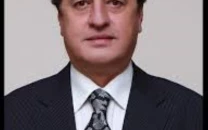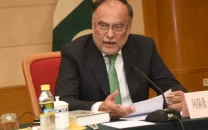Lacunas in our juvenile justice system
Children who pass through the prison system will emerge as more hardened criminals, unless issues are addressed.

Lacunas in our juvenile justice system
While the need to treat juvenile offenders as a separate category is in accordance with international norms, the Lahore High Court declared the JJSO unreasonable and impractical in 2004, much to the concern of child rights organisations. While the Supreme Court has temporarily suspended the High Court decision, the ultimate fate of the JJSO still remains undecided.
In addition to the existing ambiguity concerning the need for a juvenile justice system in the country, several implementation flaws have also become apparent over these past few years, which need more attention. The JJSO is itself rather scant with only 15 sections, so it is not surprising to find it vague, concerning several important issues. For instance, the JJSO states that all accused children under the age of 18 have the right of legal assistance at the government’s expense. However, the process of securing free legal assistance is very complicated in effect.
While the Ordinance mentions the need to establish juvenile courts, government funding for doing so has not yet materialised. Although a procedure for prosecuting juveniles in the absence of juvenile courts is prescribed, this procedure is not being followed, either. The JJSO recognises the need for ensuring that children are kept separate from the adult prison population to ensure their safety. Yet, children are regularly transported and locked up with adults while waiting for trials or for their ages to be determined.
The JJSO forbids use of restraints or corporal punishment but juveniles are often seen handcuffed. Children also continue to face corporal punishment at the hands of police or jail staff. The callous attitude of government officials towards the JJSO is partly explained by the absence of any penalties provided under the law, if the officials concerned fail to fulfil their duties towards children as mentioned under the Ordinance. Unlike other countries, including India, that have developed laws ensuring that child specialists are part of the juvenile justice system, there are no provisions for social workers or psychosocial counsellors in our laws, which leaves children in detention either deprived or dependent on NGOs, which themselves are reliant on donor funds and have to negotiate with prison authorities in order to reach out to help the children.
The JJSO acknowledges the need for a probation system to enable children to remain out of detention. However, with few probation officers and scarce funds, children released on probation are unable to get the benefits of a probationary system. Getting released from jail on bail, without adequate follow-up is obviously not an adequate solution for reforming juveniles. Unless these pending juvenile justice issues are addressed, the hundreds of children who pass through our prison system will continue to face extremely tough conditions during their detention and emerge out of this process as more hardened criminals.
Published in The Express Tribune, December 3rd, 2012.














COMMENTS
Comments are moderated and generally will be posted if they are on-topic and not abusive.
For more information, please see our Comments FAQ